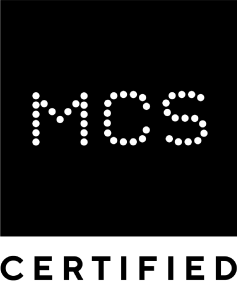Are you looking for the quick, easy answer or the real answer?
The easy answer is 30 – 50 degrees but as that’s actually 20 different angles, we’re going to use this blog to explore the best angles for individual solar panels and why the angle is important.
Why is the angle of a Solar Panel important?
The further north you travel from the equator, the weaker the sun’s rays are when they reach the earth. We already know this as we head south when we want to spend a few weeks on the beach somewhere warm, sipping chilled drinks and getting a tan.
The nearer to the equator you get, the easier it is for your skin to burn because the sun’s rays are getting more concentrated. The more concentrated the rays the more power is hitting a smaller space.
Your location in the Northern Hemisphere, between the Equator and the top of the earth, will dictate the angle, and efficiency, of any solar panels you install.

What is Solar Insolation?
Solar insolation is the amount of power the sun has in a given area – this can also be known as Global Photovoltaic Power.
We don’t want to go into the maths of it, or how you can measure it, or anything like that as it’s irrelevant to your solar power system. The solar insolation in your area will change with the seasons, but those levels will not change too much over the decades.
For example UK’s annual insolation is between 750 – 1,100 kilowatt-hours per square metre – meaning a solar panel a metre square is exposed to a massive amount of power.
Solar Panels can currently harness about 22% of that power but, as technology improves, it will become more.

The best direction for a solar panel system
We know how much energy we can potentially get from the sun, so we need to ensure the solar panels are installed in the very best position to mop up every kWh we possibly can.
We learn from a very early age that the sun rises in the east and sets in the west so, in the Northern Hemisphere, that means pointing the panels due south. If the panels are pointing south the sun will shine on them from dawn ‘til dusk.
When panels are positioned due south they will function at the very top of their efficiency, 24% if using 104 Half Cell monocrystalline panels, but they are still perfectly usable if your roof points southwest or southeast.
Panels on roofs that point north can still be used but they won’t function at their maximum efficiency.

The impact of angle and direction on solar panel output
When you are making a home improvement investment as big as installing a new energy system we can imagine you are doing a lot of research.
This can lead to a lot of misinformation when it comes to solar – it’s a new technology so data can be easily mis-represented.
If your home’s roof is at a perfect 35 degree pitch and is facing directly due south, it will receive 95% of the light energy each year.
You will see information telling you if you deviate from this your panels will be rendered useless, but this is not true.
Truth is, even if your house roof isn’t pointing due south, but the panels can be at 35 degrees, panels facing southeast or southwest will still be soaking up 80% of the power they need.
Even a northeast/west facing roof, with panels at 35 degrees will receive over 60% of the energy you would get on a south facing roof, and you can make up the shortfall with extra panels.
‘This is sorcery!’ I hear you shout … but it isn’t.
It’s actually due to the fact that over half the light energy in the UK is diffused by clouds, and reflected off the ground/buildings, so it’s not always coming directly from the sun and the energy is not as affected by the angle of the panel.
Calculating the optimal solar panel angle!
So, how do we work out the optimum solar panel angle?
The rule of thumb is:
Add 15 degrees to your latitude during winter, and subtract 15 degrees from your latitude during summer.
If you are in London, the latitude is 51 degrees – so in summer your panels will be optimum at 34 degrees and in winter that would be 66 degrees.
If you have more money than sense you could fit moving panels that follow the sun as it travels across the sky – but we would suggest placing the panels at an angle somewhere within the 34 – 66 degrees.

Can you install north-facing solar panels?
Strictly speaking, yes, you could.
However, the number of panels you would need to put on your roof would make it impractical.
The chances of your roof facing exactly north are fairly low though, and you can expect a decent output from panels on a north west/east facing roof.
Does the best angle for solar panels change throughout the year?
As we have covered before, the angle of the sun’s rays change throughout the year, so the ‘perfect angle’ will change throughout the year.
The further you get from the equator the more the ‘perfect’ angle will change throughout the year.
For instance a panel in Quito, Ecuador, which is on the equator, would see very little difference between summer and winter and would have panels pointing straight up or at zero degrees – the same panels in London would angle somewhere between 34 and 66 degrees.
The angles are not super important though as the loss of efficiency between 34 and 66 is less than 10% so it may not be cost effective to fit tracking panels or re-angle fixed panels whenever the season changes.
The UK average is 35 – 40 degrees and this is usually the angle professionally installed panels will be fitted.
Can you put solar panels on a wall?
Yes, you can fit panels on walls, so long as you have the correct brackets and such like.
However, fitting panels on your walls will create a number of problems that fitting them on a roof won’t.
Walls will be shaded for a big proportion of the day, they will be more subject to more shade from trees and other buildings and they will be less stable – this applies to floor mounted panels too.
You could fit some extra panels on a wall to boost your system if you like, but it is worth bearing in mind that you may need planning permission if they protrude more than 20 cm from the building and they would be much less efficient than roof mounted panels.
Learn more about solar panel mounting.
Can you put solar panels on a flat roof?
Panels on flat roofs are very common and usually seen in warehouses, factories and other commercial installations.
If you have a flat roof on your home or an extension, this can be used for panels without much issue.
The panels would be installed on sloping brackets to ensure they are at the correct angle, so the roof must be able to take that extra weight. Also this is more expensive than standard roof fittings.
The advantage to a flat roof is, if there are no obstructions, you can usually fit the panels at the perfect angle, and facing due south, for full efficiency.
Learn more about flat roof solar panels.
Non-optimal roof angles
While we would have to say there aren’t any ‘non-optimal’ roof angles, it would depend on what we mean by ‘optimal’.
To get full efficiency from a panel the roof would have to face due south AND be tilted at the perfect angle for your area – the chances of your home being built with this in mind is quite low.
There may be some roofs in the UK that no MCS registered installer would attempt to put panels on but, we would say, there is a solar energy system for just about any home.







